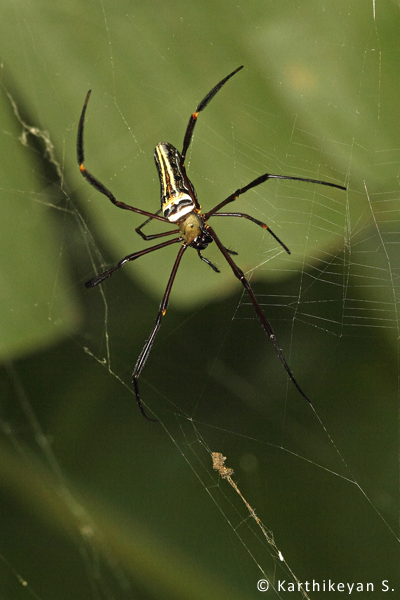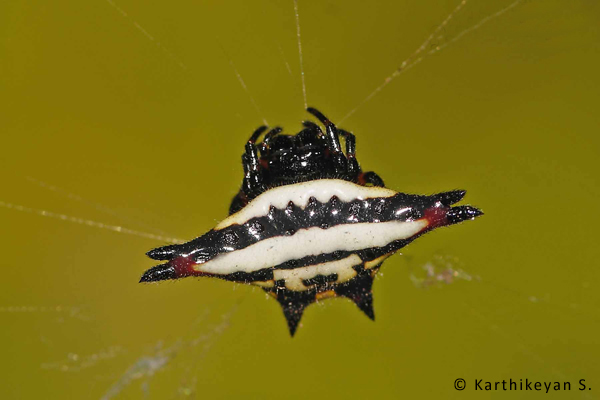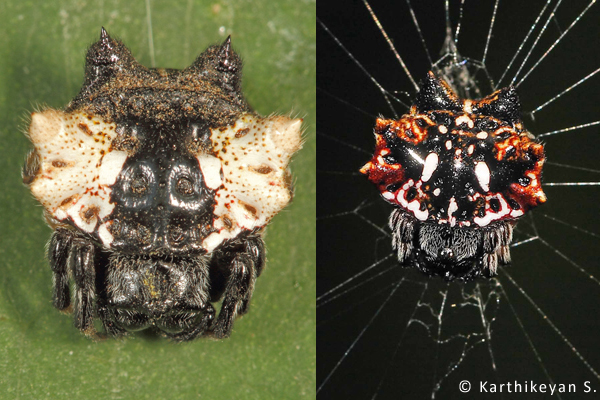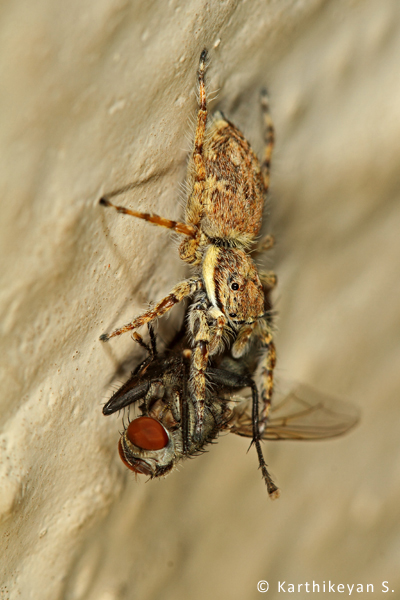Spiders have an uncanny knack of turning up at the most unexpected of places and surprising you. I am not the only one to have experienced this. People have seen spiders on remote mountaintops, on newly formed islands and other such isolated locations. How spiders manage to get to these distant places and conquer newer territories is another story.
I have written about my garden a few times in the past. I also, recently, wrote about the quarry (that was) behind my house. My garden was once part of a larger landscape on the outskirts of the burgeoning city. Today, it has been reduced to almost an island in the landscape with increasing amounts of brick and concrete engulfing it. This has not kept the little critters from continuing to use the space I call my garden, while pleasantly surprising me from time to time.
Couple of weeks ago, with this story in mind, I stepped into my garden to photograph some spiders. Was I surprised? Surprised – most certainly; but also, overwhelmed with what I saw! For the first time in three decades, I was treated to a large web of a Giant Wood Spider with the spider taking its rightful place on it. Over the next hour or so, without much effort, I spotted and photographed eight species of spiders!
This post is about such spiders that have called my garden home – some have used the space for prolonged periods while others have shown themselves up just occasionally.
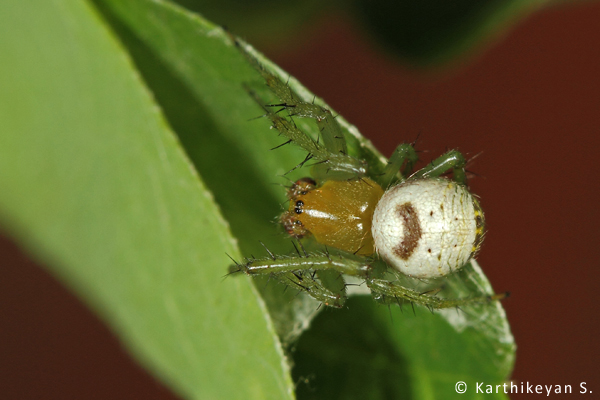
Araneus mitificus also referred to as the Kidney Spider is seen from time to time in the garden. It also builds a little retreat in the leaf where it spends most of the daylight hours.
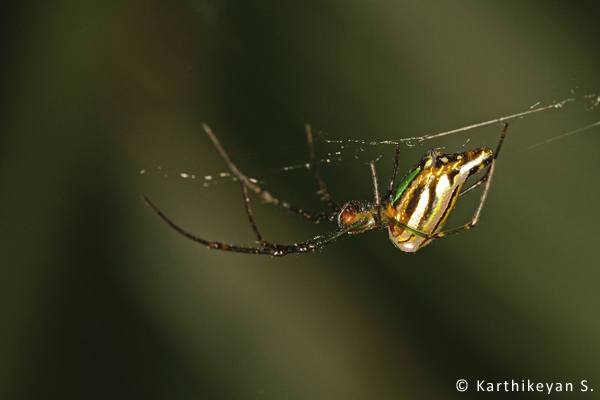
The Orchard Spider, Leucauge decorata is pretty spider. It builds its web amid the shrubbery in the garden.
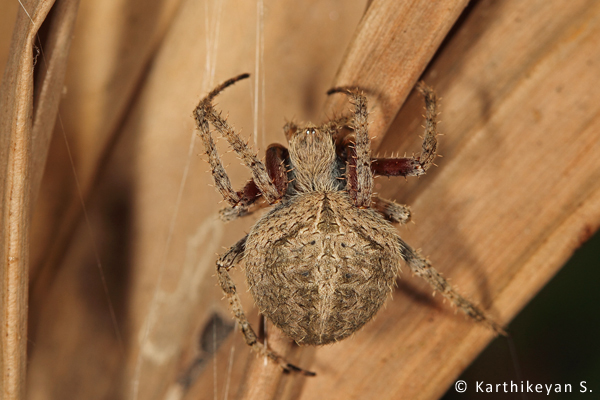
Common Orb Weaver Neoscona sp. – sits in the middle of the orb web through the night and hides in a retreat during the day. The retreat is usually under a leaf , fold of a leaf or similar situations.
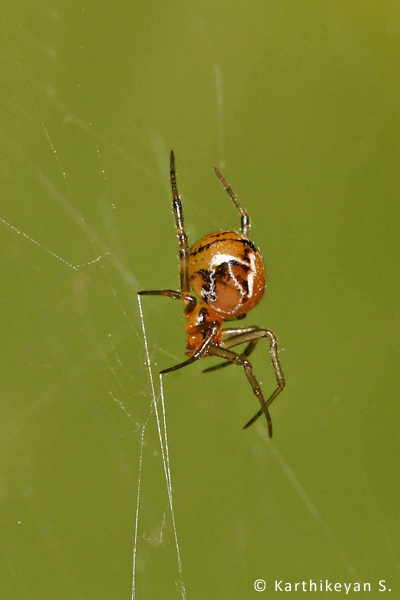
Parasteatoda mundula – This is a tiny globular spider that builds an irregular web in low bushes in the garden.
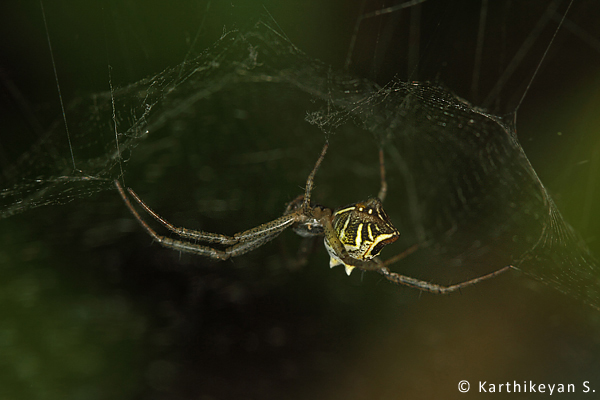
The Tent Spider Cyrtophora cicatrosa builds its tent-like web in a variety of situations in the garden. Does not spare the corners of the building either! Greenish bead-like egg-cases can often be seen strung together in the web.
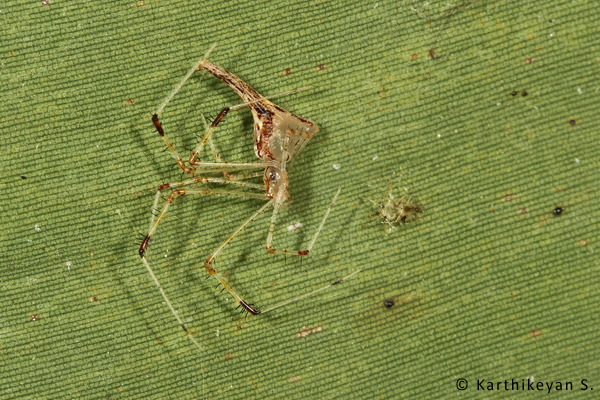
Rhomphaea argyrodiformis : This spider was also surprised me by making its appearance in my garden. I have seen them invariably on the underside of the banana leaf!
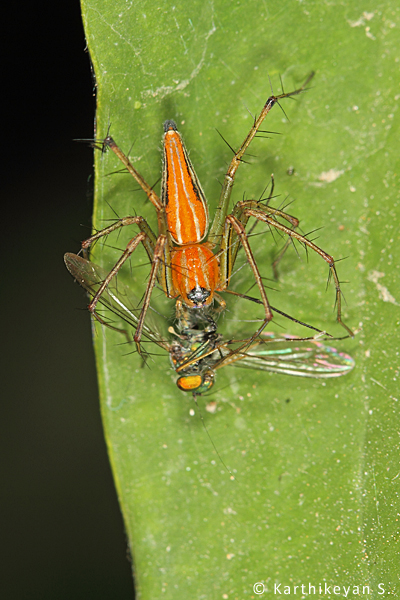
Burmese Lynx Spider Oxyopes birmanicus is an active hunter and does not build a web to catch its prey! This can be seen wandering about on the foliage catching small creatures.
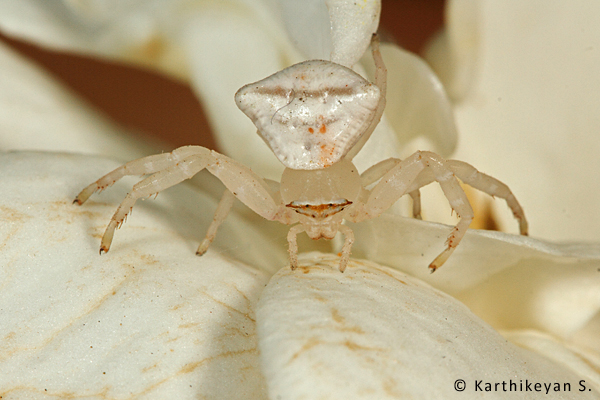
Crab Spider Thomisus sp. – This individual was lurking in the fragrant flowers of the Gardenia plant hoping to ambush any insect that may visit the flower.
Jumping spiders aplenty. Their curious, sprightly and active nature are endearing. They are found in many places in an urban environment – vegetation, buildings, etc. Read more about them here.
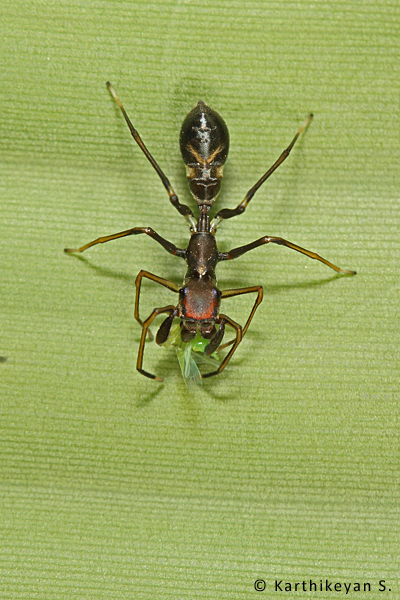
Ant-mimic Spider Myrmarachne sp. Click here to read more about them. Read more about Ant-mimic Spiders.
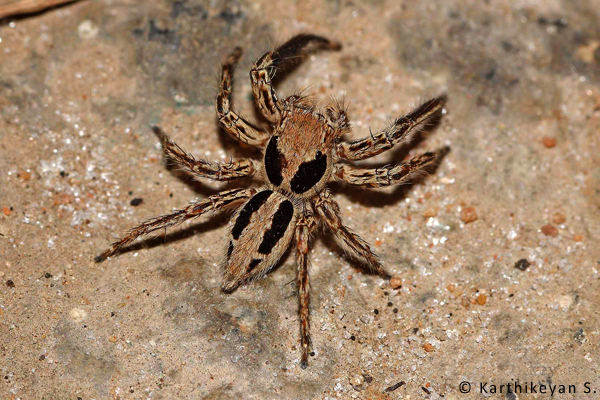
The Small Zebra Jumper Plexippus petersi is quite common and it can be seen moving about on the walls of buildings.
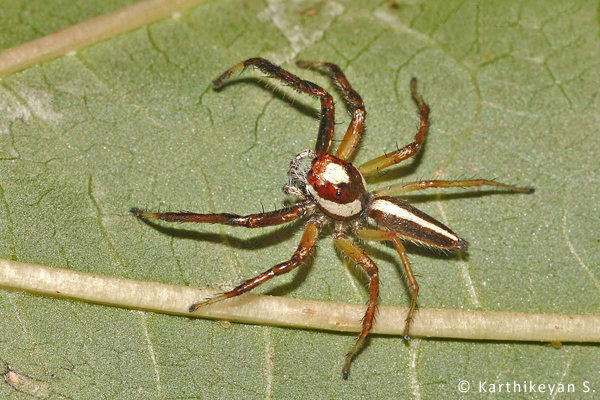
Two-striped Telamonia Telamonia dimidiata. There is a marked sexual dimorphism in this species. This is a male.
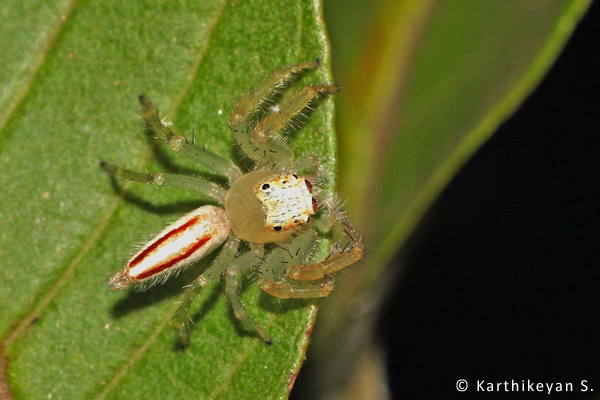
Two-striped Telamonia Telamonia dimidiata. This female, like the male can be seen on vegetation actively moving about.
These are but just some of the spiders from my garden. I have enjoyed spending time in my little garden looking for spiders and have been fortunate to document many more. It has made me realise how even a small green island in the vast urban space can give an opportunity to and support these beautiful little organisms, enriching our otherwise mundane existence.
